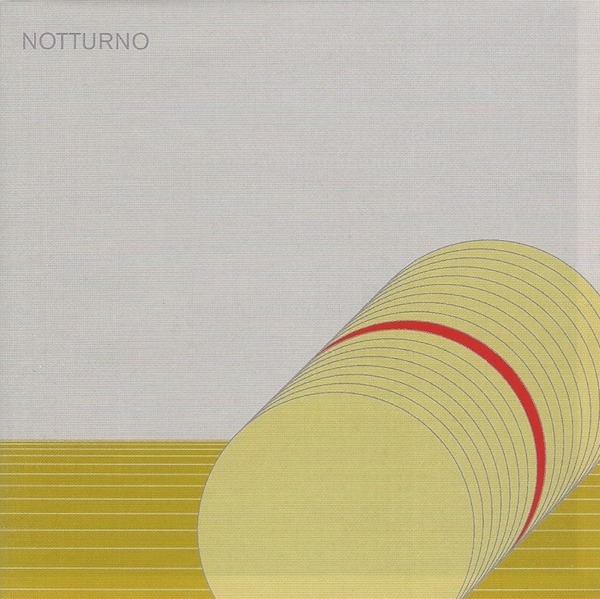
 |
|
 |
Format: CD Label & Cat.Number: Die Stadt DS102 Release Year: 2007 Note: one of the very early (originally 1987) TIETCHENS albums from the experimental (somehow post "industrial") phase, re-issued in the DIE STADT CD series, back in stock! - "..eine ganze eigene, verstörende "Alien"-Atmosphäre, recht schroff & konkret mit viel verfremdeten Klaviermaterial und wieder bemerkenswerten Titeln wie "Halbe Tanzmusik" - wie auch "Formen letzter Hausmusik" eines der frühen Meisterwerke auf denen sich der hier schon unverkennbare TIETCHENS-Stil deutlich niederschlug."
Price (incl. 19% VAT): €15.00 More InfoSchon die 10te CD in der DIE STADT-Reihe mit Wieder-veröffentlichungen früher TIETCHENS-Werke. NOTTURNO erschien im Original 1987 und schaffte eine ganze eigene, verstörende "Alien"-Atmosphäre, recht schroff & konkret mit viel verfremdeten Klaviermaterial und wieder bemerkenswerten Titeln wie "Halbe Tanzmusik" - wie auch "Formen letzter Hausmusik" eines der frühen Meisterwerke auf denen sich der hier schon unverkennbare TIETCHENS-Stil deutlich niederschlug."Tenth part in the ongoing re-release series of all early Tietchens albums between 1980-1991. Notturno was originally released by Spanish label Discos Esplendor Geometrico in 1987 and also by Barooni on CD in 1992. Remastered version in a first edition of 600 copies in jewel case with full color artwork and poster booklet also featuring the original front and back cover. By the time Studie für Klavier (Formen Letzter Hausmusik, DS84) was released, it actually wasn't my first attempt to use the piano as a sound source. Various pre-studies came before this, but all which either were not characterized as such in their title or simply didn't make it onto record. I was intrigued by the great range of sounds it offers in general, but also by the multiple possibilities to produce sounds inside of the piano. Of course I was fully aware that these techniques had already been used by other composers like Henry Cowell and John Cage in the past. Not only could I make use of a grand piano in 1986, I also had the technical equipment at hand which didn't leave nothing to be desired. I wasn't quite precise calling these pieces Studien für Klavier (Piano) by the way, as I was actually using a flügel (grand piano). I began preparing the strings in an almost old fashioned way, also producing sounds with unusual aids (electric gastr beater, wire brush, coins and others). Then in another step, with the help of the studio, I carefully started working on the recorded sounds. While doing this, I wasn't even afraid of using some good old avant-garde tricks, by the way. But I won't tell. The fact that Notturno was released by an industrial label, shows how much the interest in unusual electro-acoustic music had grown at the time. In fact, Notturno is nothing less than an industrial album. To my own delight and to the delight of the listeners as well, I used techniques which were introduced in the field of new music since several years already. As a result, Notturno can be seen as a cross between musical styles. On one hand it sounds academic, but in fact it isn't. But the question whether this was U (popular) or E (serious) was obsolete anyway, as electro-acoustic experiments didn't exclusively belong to the circle of serious composers anymore. Of course I wasn't the first or only non-academic composer who produced music, which couldn't be categorized easily then, and maybe even still not until today. As a result, the exchange of these new aesthetic strategies with other musicians and listeners in the mid-'80s, further encouraged the musicians to produce such music, and as a result, labels such as Discos Esplendor Geometrico could be sure to sell a small edition of 500 copies in a fairly short time. The ears had opened up for this genre-crossing music and the heads were ready to accept. We had succeeded breaking new ground." [label info / liner notes] "....Following 'Formen Letzter Hausmusik' and 'Hydrophonie', 'Notturno' was the third 'serious' attempt in composing more serious electro-acoustic music, and Tietchens limits himself to using the (grand) piano. In a good tradition, say starting with Cage's prepared piano, Tietchens treats the inside and outside of the piano with objects, like an electric gastr beater, wire brush, coins and others, but unlike Cage it's for Tietchens only a starting point. The recordings are processed in the studio, in no doubt true Tietchens style. Looping the sounds around, filtering through sound effects and synthesizers, after which they finally find their form in neatly constructed pieces of music. To use loops as to the extent that Tietchens does is something that sets him aside from the regular musique concrete composers. At the time for many, yours truly included, this was the first introduction to the more academic music, while now, we hear a record that is certainly a great one but perhaps not so academic as we thought back then. 'Notturno' is one the best Tietchens works that one can encounter and the mastering is much improved over the first edition on CD. While many seem to think that Tietchens music is quite distant and cold, 'Notturno' combines playful melodies and sturdy processing of the material. Certainly one to get if you are only remotely interested in his work." [Vital Weekly] www.diestadtmusik.de |
| © 2007 Drone Records | | Celler Strasse 33, 28205 Bremen, Germany | Privacy and cookies policy | Impressum / Allgemeine Geschaftsbedingungen / Haftungsausschluss | Links to the scene |